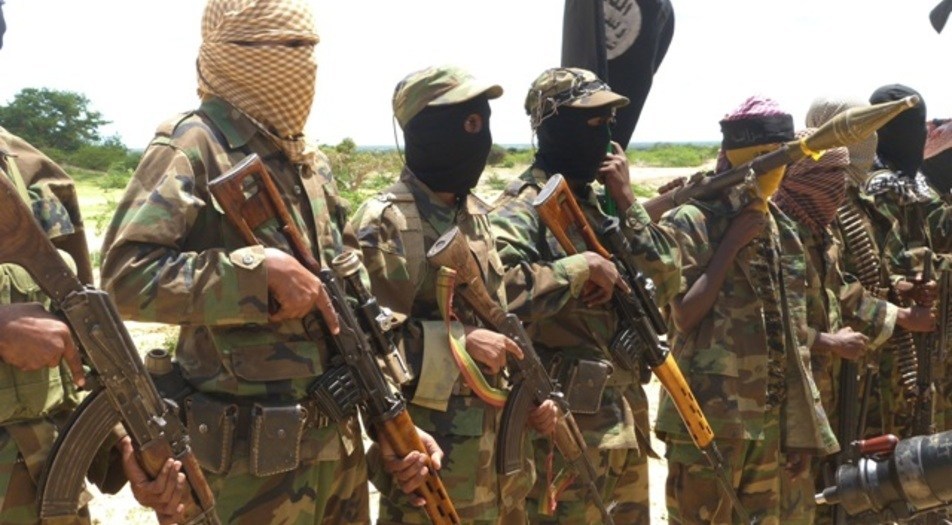On Monday, the Pentagon announced that a U.S. airstrike in Somalia targeted and killed 35 al-Shabaab fighters near the Ethiopian border. No civilian casualties were reported.
The U.S. was active with airstrikes over the weekend, conducting four against al-Shabaab targets alone, which reportedly killed two other fighters.
The U.S. Africa Command (AFRICOM) released a statement saying that the airstrike hit the targets “as they were transitioning between locations in a rural area,” this site is located approximately 23 miles east of Beledweyne, Hiran region.
“We continue to support our Somali partners, especially when their operations provide us opportunities to take the fight to Al Shabaab as an element of our partnered strategy,… “In the case of this strike, we interrupted an Al Shabaab attempt to mass their forces,” AFRICOM Director of Operations Maj. Gen. Gregg Olson said.
“Precision strikes eliminated a potential threat to our partners and to the people of Somalia well before the terrorists ever got themselves organized.”
According to the DOD, there is between 3000 to 7000 al-Shabaab fighters and up to 250 ISIS fighters in the region as of last summer. The head of AFRICOM, Marine Corps Gen. Thomas Waldhauser, told the Senate Armed Services Committee earlier this month that the U.S. airstrikes alone will not defeat the militant group.
“At the end of the day, these strikes are not going to defeat al-Shabaab,” Waldhauser said.
But with the U.S. vowing to cut troop strength in Africa, especially the counterterrorism missions by about 10 percent, or roughly 720 of the 7,200 military forces serving in the command, the U.S. has stepped up airstrikes on the terrorists. It is one way of keeping the al-Shabaab fighters off-balance while they aid the Somali National Army to step up and take the lead role in securing their own borders.
They have a long, long way to go but they are making some progress, with the help of coalition airstrikes. Prior to 2017, the U.S. was only authorized to strike targets that were threatening U.S. advisors on the ground in a self-defense mode. But last year, the airstrikes were allowed to target al-Shabaab or ISIS elements wherever the opportunity arose. They carried out nearly 50 airstrikes a year ago.
So far, this year, the U.S. has conducted 20 airstrikes, including this latest this weekend where they “eliminated checkpoints and facilities used by al-Shabaab to collect illegal taxes to fund terrorist activities and to oppress” [Somali citizens], AFRICOM released in a different statement. Whenever and wherever the terrorists of al-Shabaab or ISIS begin to mass their forces, if U.S. intelligence spots them, then, they’re targeted.
Al-Shabaab (the Youth) began as the armed faction of the Islamic Courts Union (ICU), which later splintered into several smaller factions. This happened after al-Shabaab was defeated in 2006 by Somalia’s Transitional Federal Government.
In 2012, they announced their support for al-Qaeda. They believe in a very strict interpretation of sharia law. They ban most entertainment, such as films and music; the sale of khat, a narcotic plant that is often chewed, which is very popular in the area; smoking; and the shaving of beards. The punishment meted out is often of the stoning or amputation variety.
They try to block any humanitarian aid which forces the civilian populace to live in a near-starvation state and in fear. The U.S and many other countries have branded them a terrorist organization. Their recruitment is down due to defections, lack of pay for low-level fighters and airstrikes. However, due to large Somali faction living in the Minneapolis, MN area, they attracted dozens of recruits from there.
Al-Shabaab was responsible for a pair of bombings in Mogadishu that killed over 500 people in October 2017.
The terror organization wasn’t a big priority of the previous Obama administration and in 2016, the U.S. conducted just 16 airstrikes. Things began to change with the new Trump administration. Airstrikes more than doubled to 35 in 2017, including a large one that killed 100 fighters in October 2017 northwest of Mogadishu.
While the U.S. has waged mainly a proxy war against al-Shabaab, arming and training regional forces, the U.S. has 500 personnel in Somalia, which includes troops, civilians and contractors, mostly in an advisory role.
Photo: Wikipedia
